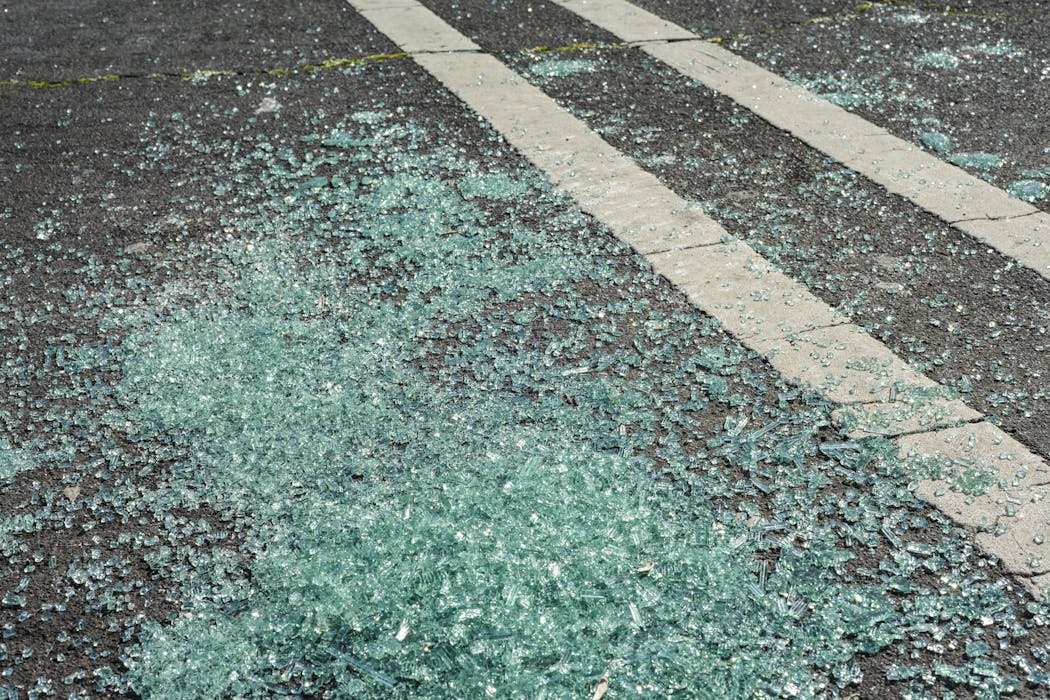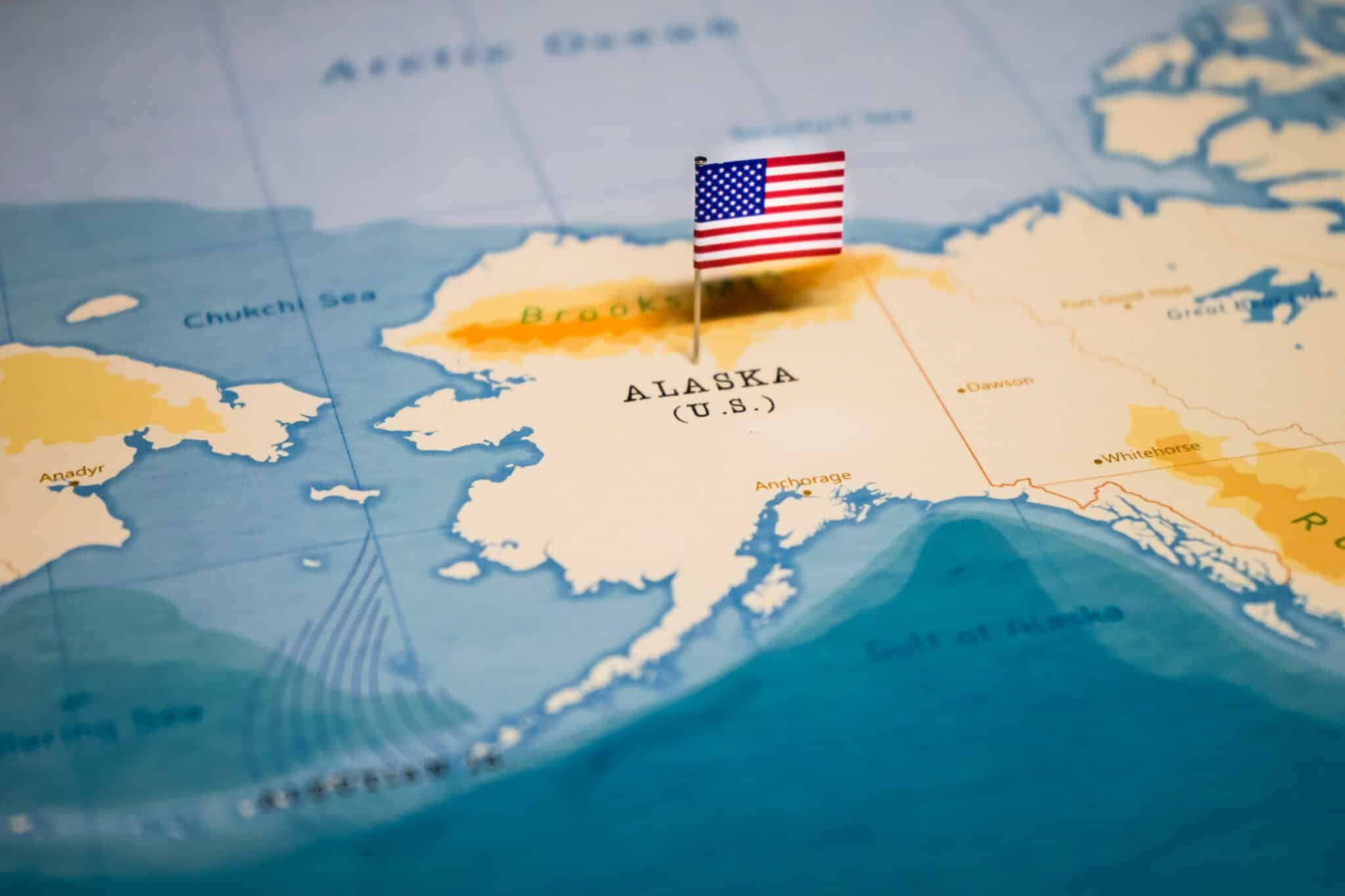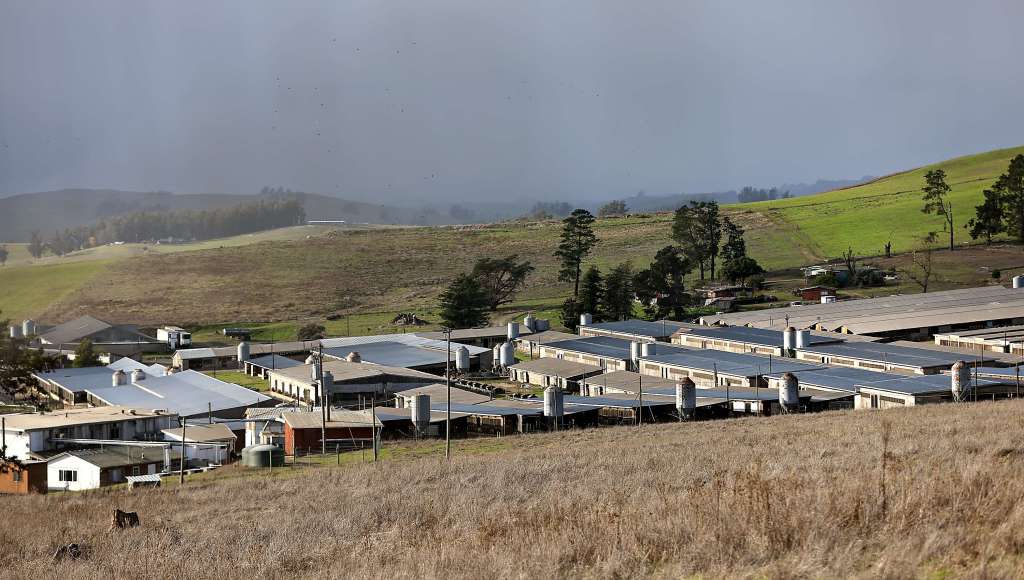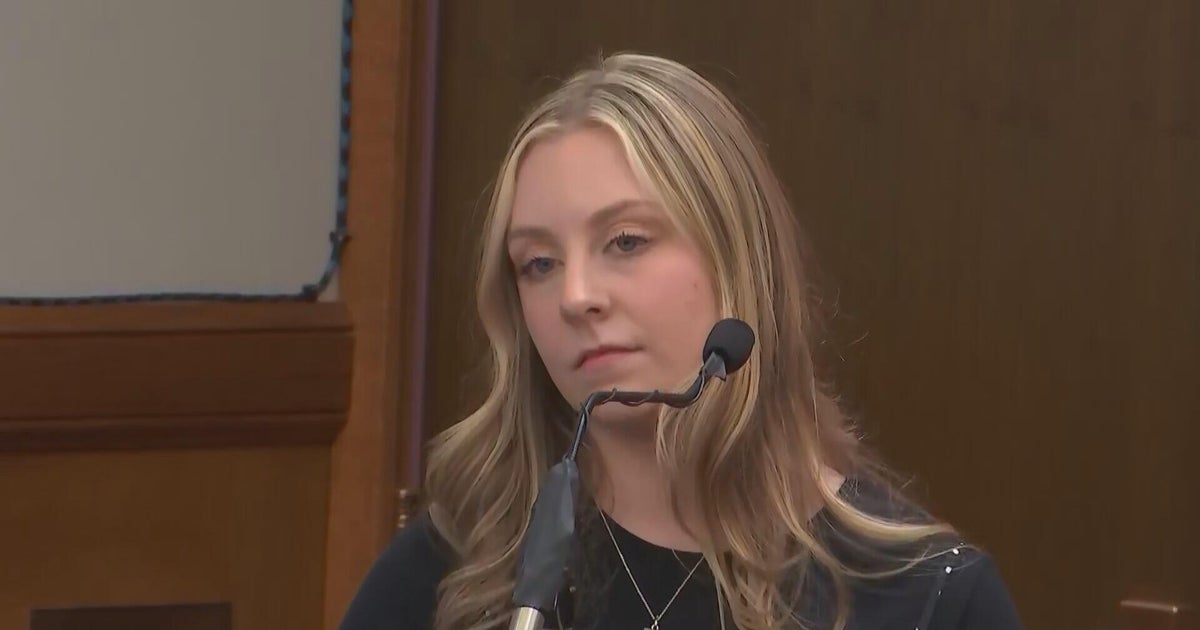(Credit: hyotographics on Shutterstock)
Massachusetts leads the way when it comes to lowest levels of stress in 2025.
In A Nutshell
- Alaska ranks as America’s most stressed state, driven by the nation’s highest suicide rate (28.15 per 100,000), sky-high living costs 25% above the national average, and harsh isolation that limits access to healthcare and legal resources.
- Massachusetts residents experience the lowest stress levels in the country with the best safety rating, lowest suicide rate (8.58 per 100,000), and strong access to mental health and legal services despite having the highest cost of living.
- Personal injury lawyers report that state stress levels directly correlate with accident and injury claims, as residents in high-stress environments face greater risks from financial strain, poor housing, unsafe working conditions, and delayed medical care.
Alaska is the most stressed state in the nation, according to a new nationwide study that reveals how geography plays a massive role in American mental health. Researchers analyzed everything from crime rates to air quality across all 50 states and found that where Americans live might matter more than previously thought when it comes to daily pressure and anxiety.
The study, conducted by Florida personal injury law firm Anidjar & Levine, shows that Alaska earned the dubious distinction of America’s most stressed state with a score of 84.50, more than three times that of Massachusetts, which came in at 24.90. For context, Alaska’s suicide rate of 28.15 per 100,000 residents is more than triple the national average. Add in a cost of living that runs 25% above the national average and a safety score of just 44.2, and the numbers paint a picture of a population under serious strain.
“High-stress environments show up in our caseload,” says Marc Anidjar, Founding Senior Partner at Anidjar & Levine. “People dealing with constant financial strain, safety concerns, and poor living conditions face higher rates of accidents and mental health crises. These pressures compound, affecting their overall wellbeing and often leading to legal situations.”
Mental illness affects approximately 51.5 million American adults, or about one in five people. Many of these cases result in stress-related legal claims, and personal injury lawyers are seeing more clients whose health problems stem from chronic pressure and anxiety. But the new research shows that not all states face equal levels of stress.
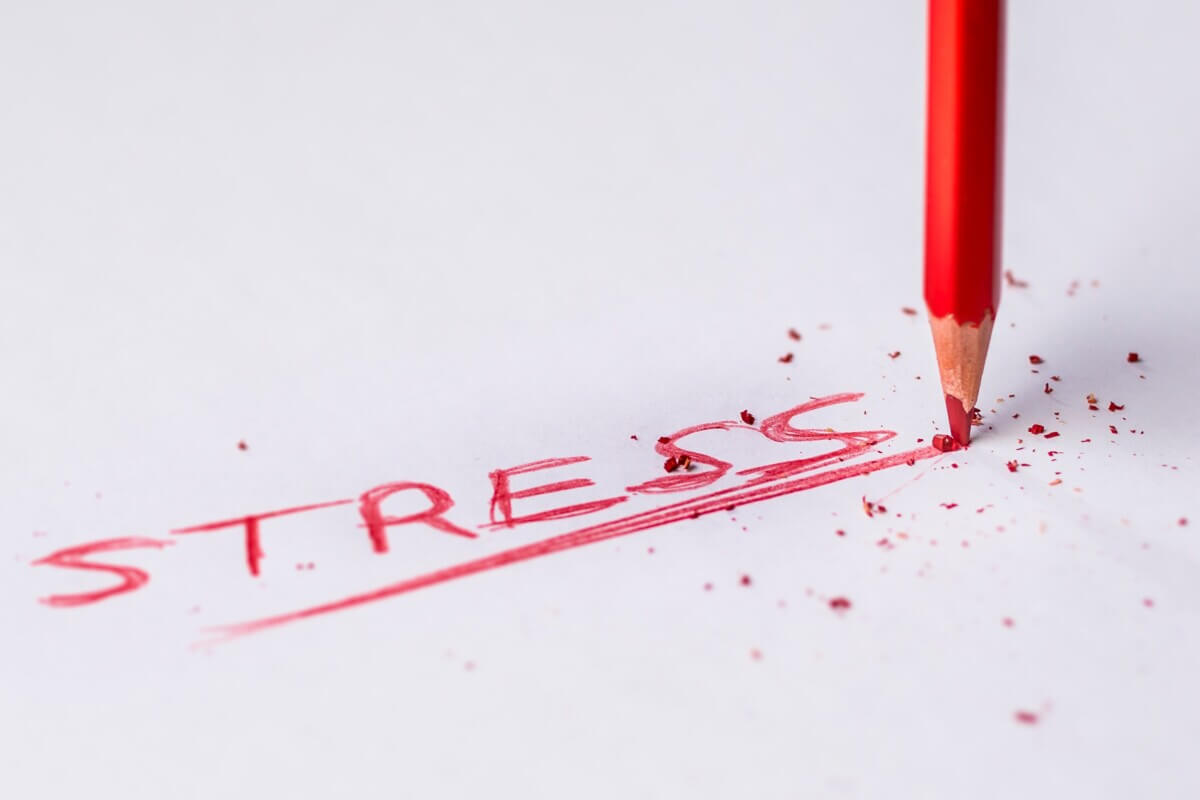
What Makes a State Stressed?
Researchers examined five key factors to determine stress levels: state safety based on crime statistics, suicide rates indicating mental health struggles, cost of living showing financial burden, environmental quality measured through air pollution and waste management, and the share of residents living in extreme poverty. Higher scores indicate greater stress levels.
After Alaska, New Mexico claimed second place with a stress score of 81.62, followed by Louisiana at 70.20. Nevada, Oregon, Arizona, Kentucky, Arkansas, Washington, and Hawaii rounded out the top 10 most stressed states.
New Mexico faces serious safety and poverty concerns. With a safety score of just 39.7, residents experience higher crime rates and less security than most other states. New Mexico also has the second-highest suicide rate at 22.76 per 100,000, signaling deep mental health struggles. An alarming 8.20% of the state’s population lives in extreme poverty, one of the highest rates in the nation. Poor environmental conditions, reflected in a cleanliness score of 35.37, add another layer of daily stress.
“We see how poverty and safety issues intersect in personal injury cases,” explains Anidjar. “When people can’t afford safe housing or reliable transportation, they’re at greater risk for accidents. When they get hurt, they often lack resources for proper medical treatment or legal help.”
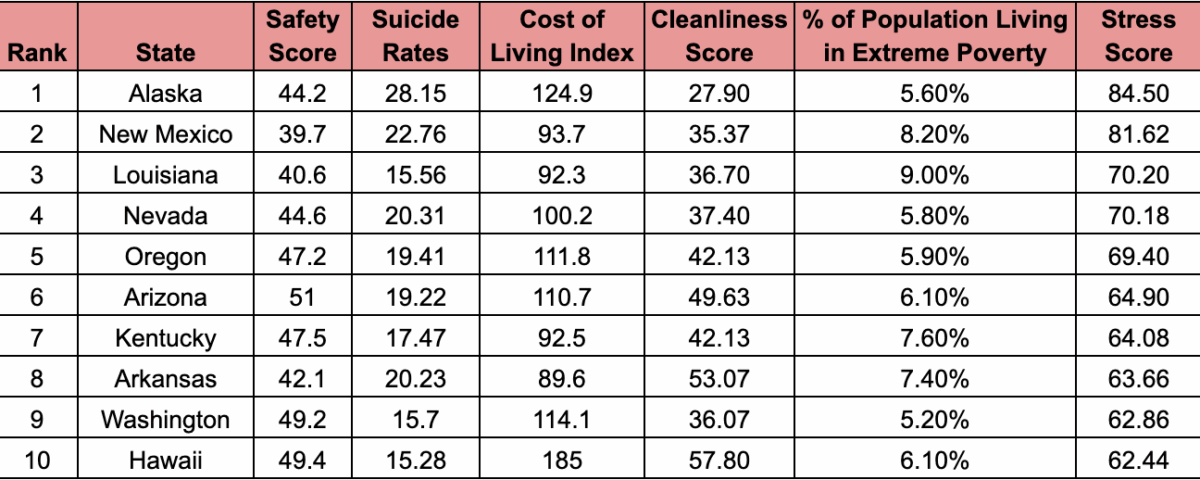
Louisiana rounds out the top three with the highest extreme poverty rate in the analysis at 9.00%, meaning nearly one in eleven residents struggles to meet basic needs. While the state’s cost of living index of 92.3 sits below the national average, widespread poverty means many residents still can’t make ends meet. Louisiana’s suicide rate of 15.56 reflects the mental health toll of these combined pressures.
“Louisiana’s poverty crisis creates a cascade of legal issues,” Anidjar notes. “Financial desperation leads to unsafe working conditions, inadequate housing, and delayed medical care, increasing the likelihood of injuries and accidents. People in these situations often don’t know their rights or how to access legal protections.”
The Calm Corner of America
On the opposite end of the spectrum, Massachusetts takes the top spot as the least stressed state with a score of just 24.90. Residents of the Bay State enjoy the highest safety rating at 60.2 and the lowest suicide rate at 8.58 per 100,000, less than a third of Alaska’s rate. These numbers reflect a population with better access to mental health resources and safer communities.
Massachusetts posts a cleanliness score of 80.97. In this index, higher values represent greater environmental stress. However, residents pay for it. Massachusetts has the highest cost-of-living index in the top ten at 141.2, over 40% above the national average. Despite this, only 5.00% of the population lives in extreme poverty, suggesting most residents can afford the higher costs.
“Better-resourced states like Massachusetts have stronger safety nets,” Anidjar explains. “People have better access to healthcare, mental health services, and legal aid. When accidents or injuries happen, residents can get help more easily, reducing long-term stress and preventing bigger legal problems.”
New Jersey claims the second-lowest stress score at 25.72 and the lowest suicide rate in the country at 7.19 per 100,000. With 4.70% living in extreme poverty and a cost of living index of 115.1, New Jersey residents generally have the financial means to handle life’s challenges.
“New Jersey’s proximity to major metropolitan areas means better access to specialized medical care and legal services,” says Anidjar. “When people can quickly get help after an injury or mental health crisis, it prevents situations from becoming more serious legal matters.”
New Hampshire rounds out the top three with a stress score of 26.14 and the lowest extreme poverty rate at just 3.90%. Fewer residents struggle with basic needs compared to other states. A safety score of 58.2 and cleanliness score of 73.43 show residents enjoy relatively safe, clean communities.
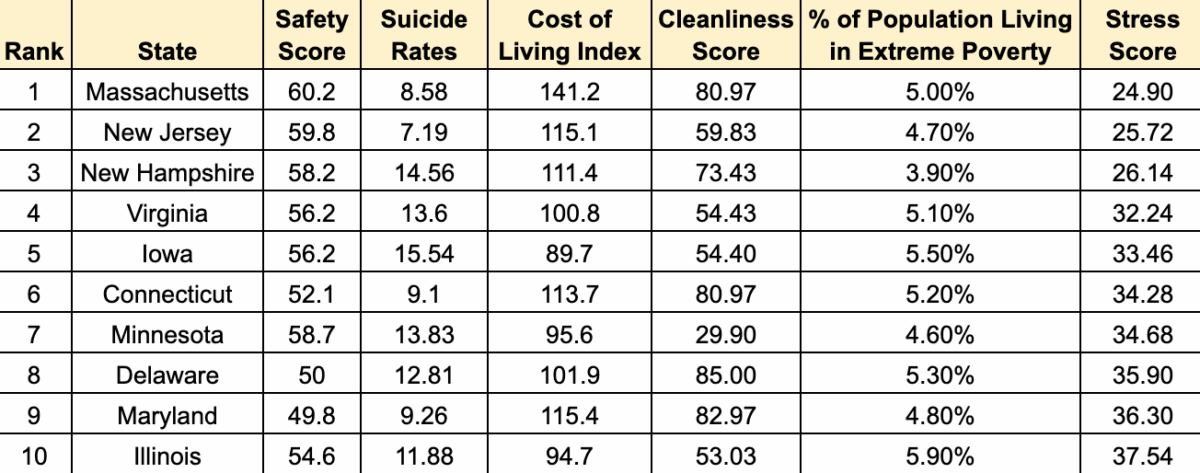
The Alaska Factor
Alaska’s isolation creates unique legal challenges that compound stress levels. When someone experiences a stress-related injury or mental health crisis, access to proper medical care and legal resources becomes difficult. Harsh living conditions, limited sunlight during winter months, and financial strain make people more vulnerable to accidents and health emergencies.
Basic necessities cost far more in Alaska than in the lower 48 states. Every dollar counts when the cost of living runs 25% above the national average. While Alaska’s extreme poverty rate of 5.60% might seem moderate compared to states like Louisiana, the actual cost of surviving in the Last Frontier makes financial pressure more intense.
“Living in a high-stress state affects not only your daily mood, but your physical health, decision-making, and overall safety, too,” Anidjar commented. “We’ve seen firsthand how chronic stress contributes to accidents, workplace injuries, and mental health emergencies that require legal support.”
People facing constant financial pressure, unsafe neighborhoods, or poor environmental conditions need to know that legal protections exist. Whether dealing with a workplace injury, a car accident caused by poorly maintained roads, or health issues stemming from environmental hazards, Americans have rights that can provide relief.
Many states offer victim compensation programs, workers’ compensation benefits, and personal injury protections that can provide financial relief during difficult times. Free consultations with personal injury attorneys can clarify options without adding financial burden. Understanding legal rights is often the first step toward reducing stress and getting necessary support.
For residents of high-stress states like Alaska, New Mexico, and Louisiana, knowing these protections exist can make a real difference when facing accidents or injuries. Meanwhile, residents of lower-stress states like Massachusetts, New Jersey, and New Hampshire benefit from better infrastructure and resources that help prevent crises before they happen. But regardless of where Americans live, understanding available legal protections remains crucial for managing stress and recovering from unexpected setbacks.
Methodology
Researchers examined stress levels across all 50 US states by analyzing five key factors. Safety ratings from 2025 indicate overall state safety based on crime rates and law enforcement data, measured on an index of 0 to 100, where lower safety levels contribute to higher stress. Suicide rates from 2023 measure the number of suicides per 100,000 residents, with higher values suggesting increased mental and social stress.
The cost-of-living index from 2025 reflects average living costs, including housing, groceries, healthcare, and utilities, based on a national average of 100, where higher costs indicate higher stress. Cleanliness scores combine three environmental factors from 2023 to 2025: CO₂ emissions data from 2023 measuring total greenhouse gas emissions by state in metric tons of CO₂, air quality index from 2025 showing average annual AQI by state where higher numbers reflect poorer air quality, and landfill density from 2024 measuring the number of active landfills per 10,000 square miles. Each environmental sub-factor was normalized and averaged to create the cleanliness score, with higher scores indicating poorer environmental quality and greater stress contribution.
Share of population living in extreme poverty from 2024 represents the percentage of residents living below 50% of the poverty line, measured as a percentage where higher values indicate greater financial pressure. To calculate the final stress score, all factors were normalized on a scale of 0 to 1, then averaged and multiplied by 100. A higher score indicates higher overall state stress levels.
First Appeared on
Source link






